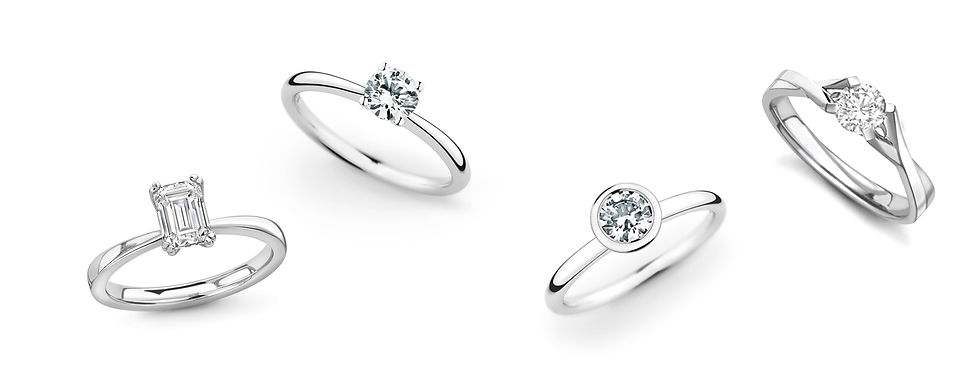
The decision between a natural diamond and a man-made diamond will ultimately be an individual one; there are no right or wrong answers, just preferences and priorities. For some people, the sentiment and romanticism associated with a natural diamond's formation over millions of years are significant factors in their decision, however if you're looking for a larger stone or a higher quality diamond on a limited budget, a lab-grown diamond might be the right option.
Sustainability
Lab grown diamonds are created in a controlled environment using advanced technology, resulting in a diamond that has the same chemical, physical, and optical properties as a natural diamond. They are also free from the ethical concerns associated with the mining process of natural diamonds. Lab-grown diamonds are the environmentally friendly choice, but modern diamond mining is more sustainable than you might think.
1. Conflict-free: Ethical diamonds are free from association with armed conflicts and are not used to finance violent activities or civil wars. The Kimberley Process Certification Scheme is an international initiative established to prevent the trade of conflict diamonds.
2. Environmental responsibility: Ethical diamonds are mined and processed with a focus on minimising environmental impact. This includes responsible land reclamation, reduced water usage, and eco-friendly mining practices.
3. Transparent supply chain: Ethical diamond companies provide transparency about their supply chain, from the mine to the retail store, ensuring that each step meets ethical standards.
4. Support for local communities: Ethical diamond practices aim to benefit the communities where the diamonds are sourced. This may involve investing in education, healthcare, and infrastructure.
Quality, Grading and Value
Lab-grown diamonds have the same physical and chemical properties as natural diamonds, so they are equally durable and visually identical to the naked eye.
Natural diamonds come in a wide range of qualities, and rare and high-quality diamonds can be very expensive. Lab-grown diamonds, on the other hand, are more consistent in terms of quality, and certain sizes and styles may be more readily available.
All lab grown diamonds are treated in the same way as mined diamonds. Once they are ready, they are sent to an independent gem lab to be certified by an expert.The process for grading lab grown diamonds is the same as traditional diamonds and focuses on the cut, clarity, carat, and colour of each gemstone.
While lab-grown diamonds are becoming more popular, their long-term value as an investment is not established, natural diamonds, meanwhile, have increased in value by 3% per annum over the past 35 years, and will likely continue this trajectory. This is an especially salient point if you feel you might want to sell your diamond later or bequeath it to a loved one.

Ultimately, the decision comes down to your personal values and what matters most to you. If environmental impact and price are major concerns, a lab-grown diamond might be the better choice. If you prefer the unique and rare nature of natural diamonds and their symbolic significance, then a natural diamond might be the way to go.
Comments